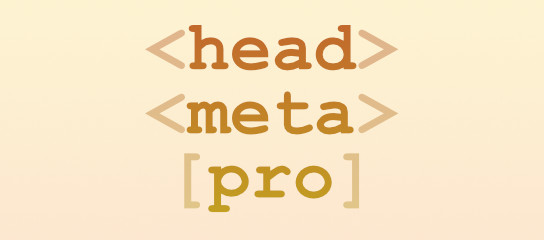Industrial Strength WordPress Dofollow Upgrade
Encourage Comments by Completely Eliminating All Nofollow Links! Want to remove all traces of the hideous nofollow attribute without having to install yet another unnecessary plugin? By default, WordPress generates nofollow links in three different ways — this article will show you how to eliminate all of them.. Continue reading »
The Deluxe One-Minute Dofollow WordPress Upgrade
After our previous article, we all know how easy it is to kill the default nofollow attributes that WordPress automatically injects into all commentator, trackback, and pingback links. Indeed, our original one-minute upgrade delivers dofollow links across the board, effectively passing the love juice to every type of response. Fine for some, but some need more.. In this article, we improve the original dofollow upgrade by differentiating between the three different response types. With our “deluxe” model, nofollow attributes may […] Continue reading »
The One-Minute Dofollow WordPress Upgrade
Want to upgrade your blog to official dofollow status but don’t want to install another unnecessary plugin? This article explains how to eliminate nofollow tags from all trackback, pingback, and commentator links in less than one minute.. After finally repenting of my nofollow sins, I began looking for the best way to eliminate the nofollow attributes that WordPress automatically injects into all commentator URL links. Of course, the most popular technique for removing nofollow attributes from comment links involves one […] Continue reading »
Comprehensive Reference for WordPress No-Nofollow/Dofollow Plugins
Recently, while deliberating an optimal method for eliminating nofollow link attributes from Perishable Press, I collected, installed, tested and reviewed every WordPress no-nofollow/dofollow plugin that I could find. In this article, I present a concise, current, and comprehensive reference for WordPress no-nofollow and dofollow plugins. Every attempt has been made to provide accurate, useful, and complete information for each of the plugins represented below. Further, as this subject is a newfound interest of mine, it is my intention to keep […] Continue reading »
Repenting of My Nofollow Sins
Hello, my name is Jeff and I am nofollow addict. When I first began Perishable Press two years ago, in August of 2005, WordPress quickly became my blogging platform of choice. Everything about WordPress was great, so I had no trouble overlooking a few seemingly insignificant quirks, such as the nofollow attributes that are automatically applied to all comment links. In fact, at first, I really had no idea what they were or how they affected my site. Eventually, as […] Continue reading »
Stop WordPress from Leaking PageRank to Admin Pages
During the most recent Perishable Press redesign, I noticed that several of my WordPress admin pages had been assigned significant levels of PageRank. Not good. After some investigation, I realized that my ancient robots.txt rules were insufficient in preventing Google from indexing various WordPress admin pages. Specifically, the following pages have been indexed and subsequently assigned PageRank: Continue reading »
Eliminate 404 Errors for PHP Functions
Recently, I discussed the suspicious behavior recently observed by the Yahoo! Slurp crawler. As revealed by the site’s closely watched 404-error logs, Yahoo! had been requesting a series of nonexistent resources. Although a majority of the 404 errors were exclusive to the Slurp crawler, there were several instances of requests that were also coming from Google, Live, and even Ask. Initially, these distinct errors were misdiagnosed as existing URLs appended with various JavaScript functions. Here are a few typical examples […] Continue reading »
Mind-Blowing Web-2.0 Design Trends
The über-trendy “Web-2.0” paradigm seems to be floating quite comfortably throughout the blogosphere these days. In fact, with it’s current mainstream popularity, the Web-2.0 mentality enjoys de facto status as the dominating influence behind modern website development and design. Not too long ago, however, Web-2.0 hovered quietly amidst the thinking of cutting-edge entrepreneurs and developers, as they strove toward freshness, simplicity, and usability. Before it’s rise to media fame, Web 2.0 was merely a loosely defined set of concepts and […] Continue reading »
Bare-Bones HTML/XHTML Document Templates
In this post I have assembled a concise collection of conforming, bare-bones document templates for just about every DOCTYPE for HTML, XHTML, and more. Continue reading »
Rethinking Structural Design with New Elements in HTML 5
HTML 5, also known as Web Applications 1.0, provides new markup elements that will change the way you design your web pages. The new elements replace commonly used divisions in web documents, facilitating an even greater degree of separation between structure (HTML) and presentation (CSS). Indeed, in many documents, the new elements will structure the document while providing enough hooks to render obsolete previously required divisions, classes, and identifiers. Let’s take a look.. Continue reading »
Seven Ways to Beef Up Your Best Pages for the Next Google PR Update
Time is running out! Soon, it will be time for the next Google PageRank (PR) update. While it is difficult to predict how your site will perform overall, it seems likely that your highest ranking pages will continue to rank well. The idea behind this article is to improve your site’s overall pagerank by totally beefing up your most popular pages. Of course, every page on your site is important. Ideally, you would want to employ these techniques to every […] Continue reading »
Suspicious Behavior from Yahoo! Slurp Crawler
Most of the time, when I catch scumbags attempting to spam, scrape, leech, or otherwise hack my site, I stitch up a new voodoo doll and let the cursing begin. No, seriously, I just blacklist the idiots. I don’t need their traffic, and so I don’t even blink while slamming the doors in their faces. Of course, this policy presents a bit of a dilemma when the culprit is one of the four major search engines. Slamming the door on […] Continue reading »
Super Loop: Exclude Specific Categories and Display any Number of Posts
Readers occasionally ask for help with their WordPress loops. Usually, these requests involve modifying the loop with some customized functionality. Frequently, such customization involves one of these popular behaviors: Continue reading »
Temporary Site Redirect for Visitors during Site Updates
In our article Stupid htaccess Tricks, we present the htaccess code required for redirecting visitors temporarily during periods of site maintenance. Although the article provides everything needed to implement the temporary redirect, I think readers would benefit from a more thorough examination of the process — nothing too serious, just enough to get it right. After discussing temporary redirects via htaccess, I’ll also explain how to accomplish the same thing using only a small slice of PHP. It’s like two […] Continue reading »
The Ultimate JavaScript Library for Embedding Flash Content
Earlier this year, Geoff Stearns and Bobby van der Sluis teamed up to create the “ultimate JavaScript library for embedding Flash content” into web documents. For those of you familiar with techniques for embedding Flash, these two names are instantly recognizable. Geoff Stearns is the author of SWFObject and Bobby van der Sluis is the author of UFO. Easily, SWFObject and UFO are the two best and most widely used techniques for detecting and embedding Flash content. Needless to say, […] Continue reading »
Essential HTML Entities
Virtually every article written here at Perishable Press requires at least one or two “special” HTML characters. Some of these characters — such as quotation marks, hyphens, and dashes — are very common, while others — such as the copyright symbol, bullet, and arrow — happen less frequently. The vast majority of special characters, however, like the latin Ä (i.e., capital letter “A” with a diaeresis), and the mathematical symbol ⊃ (i.e., superset), rarely see the light of day on […] Continue reading »

